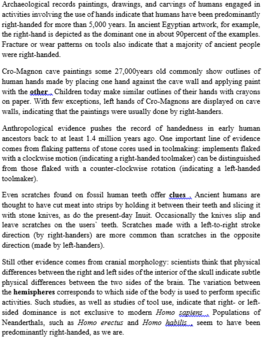Read the following passage and mark the letter A, B, C, or D on your answer sheet to indicate the correct answer to each of the questions from 36 to 42.
The goal of Internet-based encyclopedia Wikipedia (www.wikipedia.org) is to give everyone on the planet access to information. Like other encyclopedias, Wikipedia contains lots of information: more than 2.5 million articles in 200 different languages covering just about every subject. Unlike other encyclopedias, however, Wikipedia is not written by experts, but by ordinary people. These writers are not paid and their names are not published. They contribute to Wikipedia simply because they want to share their knowledge.
Encyclopedias began in ancient times as collections of writings about all aspects of human knowledge. The word itself comes from ancient Greek, and means “a complete general education”. Real popularity for encyclopedias came in the nineteenth century in Europe and the United States, with the publication of encyclopedias written for ordinary readers. With the invention of the CD-ROM, the same amount of information could be put on a few computer discs. Then with the Internet, it became possible to create an online encyclopedia that could be constantly updated, like Microsoft’s Encarta. However, even Internet-based encyclopedias like Encarta were written by paid experts. At first, Wikipedia, the brainchild of Jimmy Wales, a businessman in Chicago, was not so different from these. In 2001, he had the idea for an Internet-based encyclopedia that would provide information quickly and easily to everyone. Furthermore, that information would be available free, unlike other Internet encyclopedias at that time.
But Wales, like everyone else, believed that people with special knowledge were needed to write the articles, and so he began by hiring experts. He soon changed his approach, however, as it took them a long time to finish their work. He decided to open up the encyclopedia in a radical new way, so that everyone would have access not only to the information, but also to the process of putting this information online. To do this, he used what is known as “Wiki” software (from the Hawaiian word for “fast”), which allows users to create or alter content on web page. The system is very simple: When you open the web site, you can simply search for information or you can log on to become a writer or editor of articles. If you find an article that interests you – about your hometown, for example – you can correct it or expand it. This process goes on until no one is interested in making any more changes.
Question: Wikipedia is written by___________.
A. paid written
B. millionaires
C. normal people
D. world experts







Đáp án C.